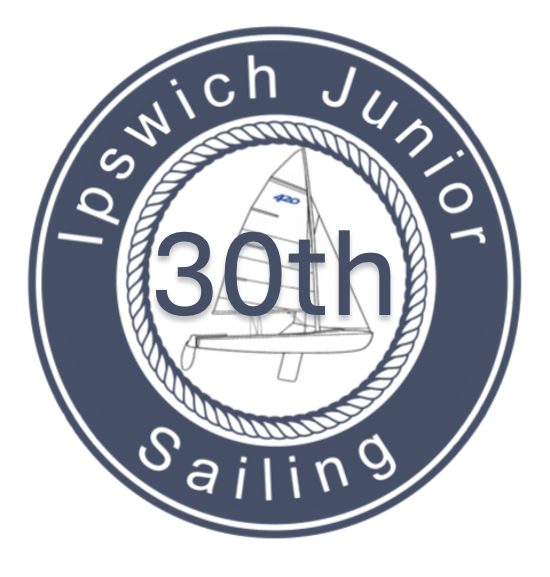
Race Curriculum and Instructional Resources
Among the many resources that our US Sailing certified Senior Instructors will use to offer a rigorous and engaging program for all ages are materials developed by US Sailing. They are a mainstay of the IJS instruction.
Sailors who have mastered the basics by taking beginner and intermediate classes might be ready for the added challenge of racing if recommended by the IJS program director. See the instructional curriculum for more details. The race curriculum is designed to introduce sailors to more complex techniques to handle and sail their boat. If you have any questions about your sailors eligibility to race, please email info@IpswichJuniorSailing.org.
Members of the race team may participate in various local regattas, including Squam Day, Sandy Bay Day, Mudflat Regatta, and Greenhead Regatta, hosted by IJS. Sailors may also enroll to sail at Marblehead Junior Race Week. Registration is required to participate in this regatta.
Race Staff 2025
- Charlie Carner – Head Race Coach
- Isabell Getchell – SI Race Coach
- Rowan Henkes – JI Race Coach
Sailing Zone:
- Houseboat Bay (southern end of the bay, near spindle, close to the beach)
Beginner Race Curriculum
IJS has designed and implemented the curriculum for advanced sailors to develop racing skills in the Opti and 420 boats. This curriculum is designed for sailors who are new to racing and is meant to develop the following skills:
- (420 only) Spin – sailor can fly spin comfortably in most conditions
- (420 only) Trap – sailor can trap comfortably in most conditions
- Roll tacking and gybing are proficient
- Boat speed – understanding of sail shape, controls, weight distribution, and trim in any condition
- Starts – has good timing and line awareness
- Tactics – Sailor understands wind shadows, lay lines, lifts, headers, rights, rules, and start line strategies.
On land:
- In-depth introduction to the racing rules of sailing; recommended purchase of current racing rule book, all rights, flags, and signals.
- Learn to rig and de-rig 420s and Optis, including stepping/de-stepping and replacing parts.
- How to navigate challenging weather, sea conditions, and wind direction effectively while racing. Headers, lifts, and finding current speed.
- Close in boat inspection for maintenance issues before, during, and after racing with a discussion of how to fix maintenance needs.
- Introduction on how to sail a dinghy race.
- Typical courses for New England dinghy sailing(port triangle, gates) including 3 & 5-minute sequences and Start & Finish Lines/how to start and finish a race.
- Trapeze skills demo.
- Spinnaker skills demo.
- Spinnaker reaching/intro to spinnaker trapeze.
- Land drills for practicing right of way on a race course.
- Tactics vs Strategy and brief points on planning for a good race.
- Learn to roll tack and steer with sails and bodyweight rather than excess rudder.
- Intro to team and match racing.
On the water:
- Basic port triangle course/gates/longer distance legs (incorporate currents and wind shifts, as they play a huge part in long-distance sailing.
- Start drill for learning timing and the start sequence
- Acceleration drill for learning how to get the boat moving
- Layline drills.
- Spotting puffs and windshifts before sailing into them
- Visualizing a good race and leg for that race
- Covering/trap/boat to boat tactics in a race
Advanced Race Curriculum
IJS has designed and implemented the curriculum for advanced sailors to develop racing skills in the Opti and 420 boats. This curriculum is designed for sailors who have mastered the basic foundations of racing to develop the following skills:
- (420 only) Spin-sailor will be able to keep the kite completely full in all conditions
- (420 only) Trapping – sailor will be able to tack wire to wire, and have correct trap form
- Roll tacking and Gybing – synchronization between skipper and crew, rolling and flatting appropriately, in any conditions
- Boat speed – sail shape, controls, weight distribution, trim all to perfection, again, in any condition
- Starts – has perfect timing and line awareness
- Tactics – The Sailor understands wind shadows from other boats, lay line awareness, lifts, headers, rights, and start line strategies and uses all of these to his or her advantage in practices and races.
On land:
- Detailed film sessions on proper body placement and boat speed technique for all wind speed ranges.
- Proper care of equipment for high-performance racing, understanding that for good races, one needs flawless gear. Also, personalizing gear and fine-tuning things like trap harnesses, halyards/sheets, trapeze, and hiking straps are essential for individual performance.
- Chalk talks about advanced race strategy and tactics
- How to manage a race/regatta
- Advanced entries/exits for maneuvers
- How to register a protest/how to defend against a protest
- Support for more advanced sailing opportunities/learning about the possibilities in the sport of competitive sailing
- Testing of understanding and application of racing rules
On the water:
- Upwind and Downwind Blenders – maneuvers on whistle
- Practice 2-3 minute starts, sail to a mark about 10 meters away
- Speed Tests
- Communication skills between skipper and crew to keep sails balanced
- Rudderless Sailing (Use of boat heel and sail trim to steer instead of blades.
- Box Drills
- Rabbit Starts